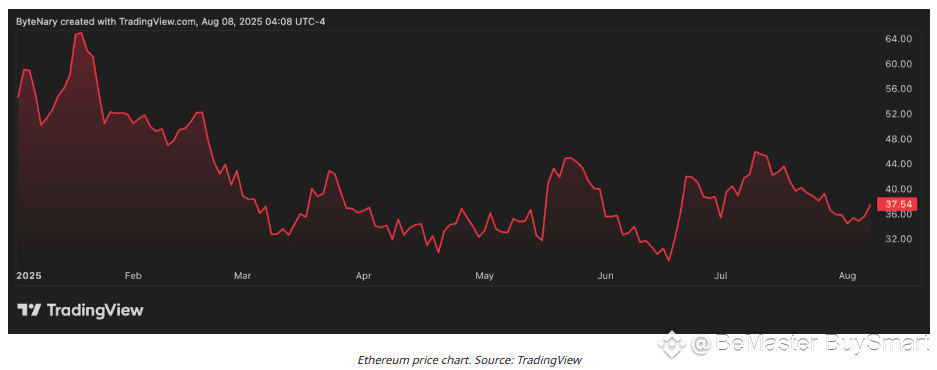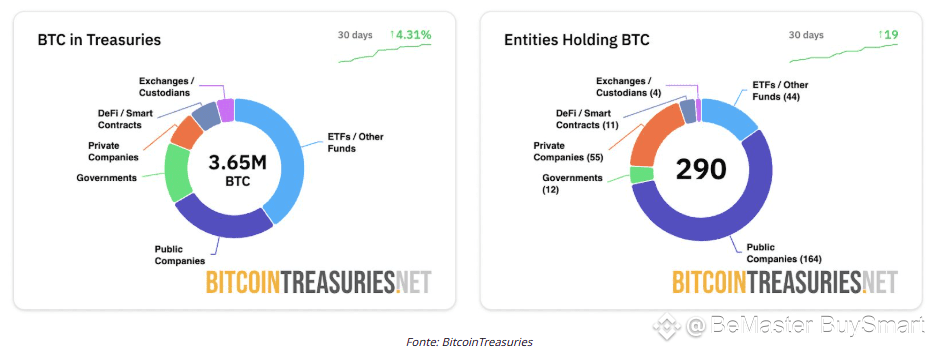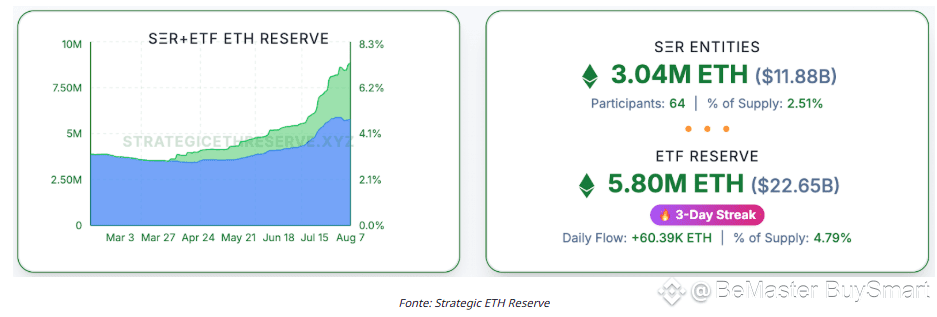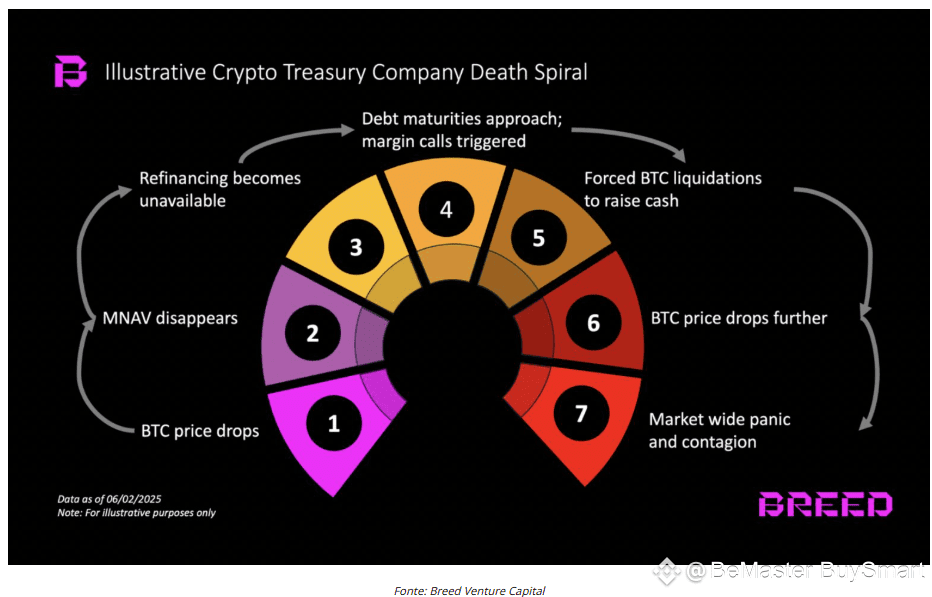Vitalik appreciates $ETH reserves but warns against the risk of leverage. Sixty-four companies currently hold 3.04 million ETH worth $11.88 billion.
Vitalik Buterin commented on the growing trend among companies to accumulate ETH reserves, a move that could become risky, especially if operating with excessive leverage. Ultra-leverage, in fact, could trigger losses of 90%.
His comments coincide with a new wave of corporate acquisitions . The aggregate data shows that corporate reserves now total 3.04 million ETH, worth $11.88 billion.
✨Ethereum founder weighs in on the benefits and risks of overleverage.
Buterin acknowledged the benefits associated with enterprise adoption of ETH during a podcast with Bankless.
He appreciated the fact that ETH is now listed as a balance sheet asset and that companies have been formed whose business purpose is precisely to hold the tokens, in turn becoming a vehicle to allow anyone to invest in Ethereum.

The founder of Ethereum also warned of risks and outlined a scenario of potential risks.
If reserves lead to ETH's collapse in three years, Vitalik admitted he would blame the hyper-leverage system.
A potential 30% drop in prices could trigger forced liquidations. This in turn could lead to a 50% decline, then 70%, and finally 90% collapse, exacerbated by the loss of credibility, he explained.
James Check, lead analyst at Glassnode, had already issued similar warnings in July regarding Bitcoin reserve strategies.
According to Check, the easy gains may have already evaporated for new participants as the market matures. The strategy could prove "much shorter-lived than many expect."
In June , VanEck's Matthew Sigel highlighted other potential issues. He specifically addressed companies using at-the-market (ATM) share issuance programs to finance cryptocurrency purchases.
In this case, when stock prices approach parity with the value of Bitcoin reserves, value dilution takes place, not new capital formation.
Semler Scientific is a case in point. The stock is down 32% year-to-date despite accumulating 3,808 BTC, a value resulting from a lower market cap multiple compared to its net asset value in Bitcoin.
✨Vitalik warns that corporate ETH reserves could become a “hyper-leveraged play” despite the benefits

Buterin's comments come as corporate adoption of crypto continues to grow significantly.
Bitcoin reserves currently stand at 3.65 million BTC distributed among 290 entities. Strategy, formerly MicroStrategy, leads the pack with 628,791 BTC.

The success of this strategy has attracted numerous imitators; in June alone, 21 new companies have added Bitcoin reserves.
✨First mover advantage: risk of market saturation
Strategy's pioneering approach under the leadership of Michael Saylor created a model that hundreds of companies now follow.
Today, the company sits on a treasure trove of 630,000 BTC, accumulated over time when it was the first to do so. This generated significant economic benefits even before the strategy went mainstream.
Check reiterated that players like Strategy rely on a certain seniority that allows them to demonstrate the validity of their investments. This advantage is diminishing as new investors enter late into an increasingly crowded sector.
“Nobody wants the fiftieth crypto treasury firm,” he explained, noting that investors are now demanding a clear strategic differentiation, not simply a pile of Bitcoin on their balance sheets.
New entrants face increasing challenges as retail investors have limited capital and cannot sustain dozens of similar strategies.
Concerns about saturation extend beyond Bitcoin to Ethereum, where corporate holdings have grown rapidly.
Bitmine Immersion Tech holds the largest amount of ETH, with 833,100 tokens, followed by SharpLink Gaming with 521,900 ETH, and The Ether Machine with 345,400 ETH.

✨Fiscal strategies suffer from structural vulnerabilities
Several financial experts have identified significant liquidity risks as the trend of cryptocurrency accumulation on corporate balance sheets grows.
In the past, liquidity-raising sell-offs have triggered market crashes even when there have been no major economic shocks. Examples include the 2008 financial crisis and the banking turmoil of 2023.
The collapses of Bear Stearns and Silicon Valley Bank have clearly demonstrated how quickly liquidity can evaporate when confidence deteriorates.
SVB's failure was particularly linked to risks of poor liquidity management, as the bank failed to liquidate assets quickly enough to meet panicked customer withdrawal requests.
VanEck recommended some safeguards. It advised suspending equity issuance programs if shares trade below 0.95 times net asset value for ten trading days.
The company also suggested prioritizing buybacks when Bitcoin rises but the share price does not reflect earnings, and tying executive compensation to NAV per share growth rather than the size of reserves.
Breed Venture Capital noted in June that only a few companies with Bitcoin reserves will survive in the long term without falling into a “death spiral” as stock prices converge with the value of BTC reserves.

It's telling that Pomerantz LLP has filed a class action lawsuit against Strategy, accusing the company of misleading investors about the profitability and risks of its crypto strategy.
Concerns extend to the artificial liquidity provided by market makers and algorithmic trading firms.
While this corporate adoption is supporting the bull market, it could fade during periods of extreme volatility, leaving traders exposed to shortages just when real liquidity becomes crucial to market stability.
🚀🚀🚀 FOLLOW BE_MASTER BUY_SMART 💰💰💰
Appreciate the work. 😍 Thank You. 👍 FOLLOW BeMaster BuySmart 🚀 TO FIND OUT MORE $$$$$ 🤩 BE MASTER BUY SMART 💰🤩
🚀🚀🚀 NOT JUST LIKE BUT, CLICK FOLLOW BE MASTER BUY SMART - Thank You.
